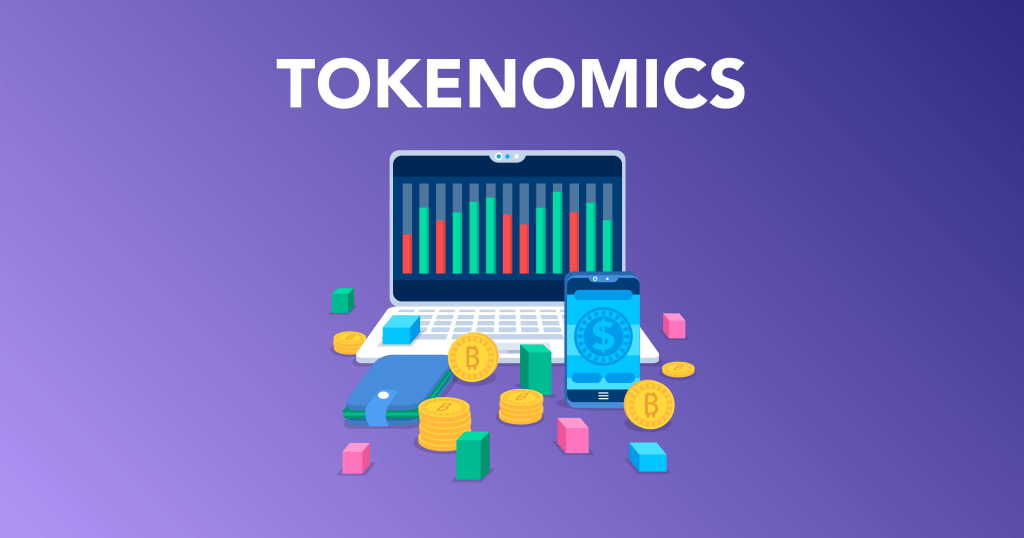Tokenomics, a portmanteau of “token” and “economics,” refers to the economic principles, mechanisms, and strategies that govern the behavior and value of a particular cryptocurrency or token within its ecosystem. It serves as the foundational framework for understanding how a cryptocurrency operates in terms of creation, distribution, utilization, and management. Tokenomics aims to create a system that incentivizes participation, ensures security, and fosters a healthy and sustainable ecosystem.
Table of Contents
Importance of Tokenomics in the Cryptocurrency Market
The significance of tokenomics in the cryptocurrency market cannot be overstated. It goes beyond the mere design of a digital asset; it is a critical determinant of a project’s success or failure. Effective tokenomics can attract investors, encourage community engagement, and drive the adoption of a cryptocurrency. One notable aspect of tokenomics worth highlighting is Black Tokenomics which focuses on empowering marginalized communities within the cryptocurrency space. By promoting financial inclusion and accessibility, it aims to bridge the gap in wealth distribution and opportunities.
The Components of Tokenomics
Token Supply– The total supply of tokens in circulation is a fundamental aspect of tokenomics. Scarcity or abundance of tokens can have a direct impact on their value. Cryptocurrencies with a limited supply, such as Bitcoin’s 21 million coins, often experience price appreciation due to increased demand and limited availability. Conversely, a high token supply can lead to devaluation and reduced investor interest. Understanding the token supply mechanism is essential for investors seeking to gauge the long-term potential of a cryptocurrency.
Token Distribution- Token distribution refers to how tokens are initially allocated and distributed among various stakeholders. The fairness, transparency, and decentralization of this process are crucial factors that influence the overall trust and credibility of a cryptocurrency project. An equitable distribution model that avoids concentration of tokens in the hands of a few can contribute to a healthy and decentralized ecosystem. Transparency in distribution also builds trust among potential investors.
Token Utility– The utility of a token within its ecosystem is a cornerstone of effective tokenomics. Tokens should serve a clear purpose, whether as a medium of exchange, a means to access specific services, or a governance tool for decision-making within a decentralized organization. For example, in the context of decentralized finance (DeFi), tokens may serve as collateral, enabling users to access loans or liquidity pools. The versatility and practicality of a token’s utility can significantly impact its adoption and value.
Token Governance– Token governance defines how decisions regarding the cryptocurrency’s protocol, upgrades, and allocation of resources are made. Many cryptocurrencies incorporate governance mechanisms that allow token holders to vote on proposed changes. This democratic approach empowers the community to shape the future of the project and maintain decentralization. Transparent and efficient governance systems contribute to a sense of ownership and participation among token holders.
Token Economics– Token economics refers to the economic incentives and disincentives integrated into a cryptocurrency’s design. It encompasses various elements, including staking rewards, transaction fees, and token burning mechanisms. These incentives are designed to motivate users to participate actively, secure the network, and contribute to the ecosystem’s growth. For example, staking rewards offer users an opportunity to earn passive income by locking their tokens to support network security.
How Tokenomics Shapes the Cryptocurrency Market
Price Stability and Volatility– Tokenomics has a profound impact on the price stability and volatility of a cryptocurrency. Some tokens are designed to maintain a stable value, making them suitable for everyday transactions and store of value purposes. In contrast, speculative tokens may exhibit extreme price fluctuations, attracting traders seeking short-term gains. Understanding a token’s price behavior is essential for investors and users to assess its suitability for their specific needs.
Investment and Speculation– Tokenomics heavily influences the investment landscape within the cryptocurrency market. Investors are drawn to tokens that demonstrate a clear economic model and potential for growth. Speculative tokens, on the other hand, may attract traders seeking short-term price volatility. It is crucial for investors to conduct thorough research and due diligence to assess the long-term viability and sustainability of a cryptocurrency project based on its tokenomics.
Innovation and Development– Tokenomics can serve as a catalyst for innovation and development within the cryptocurrency ecosystem. By rewarding developers, contributors, and participants, it incentivizes the continuous improvement of the technology and services offered. This can lead to the creation of new use cases, improved security, and enhanced user experiences. Tokenomics models that allocate resources effectively contribute to the overall progress of the cryptocurrency market.
Challenges and Risks in Tokenomics
Scams and Fraud– The cryptocurrency market is susceptible to scams and fraudulent projects. Deceptive tokenomics schemes can entice investors with promises of high returns but ultimately result in financial losses. It is imperative for participants to exercise caution, conduct thorough research, and remain vigilant to avoid falling victim to fraudulent schemes.
Market Manipulation- Tokenomics can be exploited for market manipulation. Coordinated efforts to inflate token values, known as pump-and-dump schemes, can lead to significant price volatility and losses for unsuspecting investors. Participants should be cautious and exercise restraint in the face of market manipulation tactics.
Conclusion
In the ever-evolving world of cryptocurrencies, tokenomics stands as both the architect and the compass, guiding the course of digital assets. It encapsulates the intricate dance of supply, demand, and utility, shaping the volatile yet promising landscape of the cryptocurrency market. As we venture into the future, the synergies between tokenomics, innovation, and adaptability will continue to redefine our understanding of finance and economic empowerment, making the cryptocurrency realm an ever-fascinating domain to explore and invest in. Whether you are a seasoned crypto enthusiast or a newcomer to this digital frontier, tokenomics is the key that unlocks the door to financial transformation and inclusivity for all.

